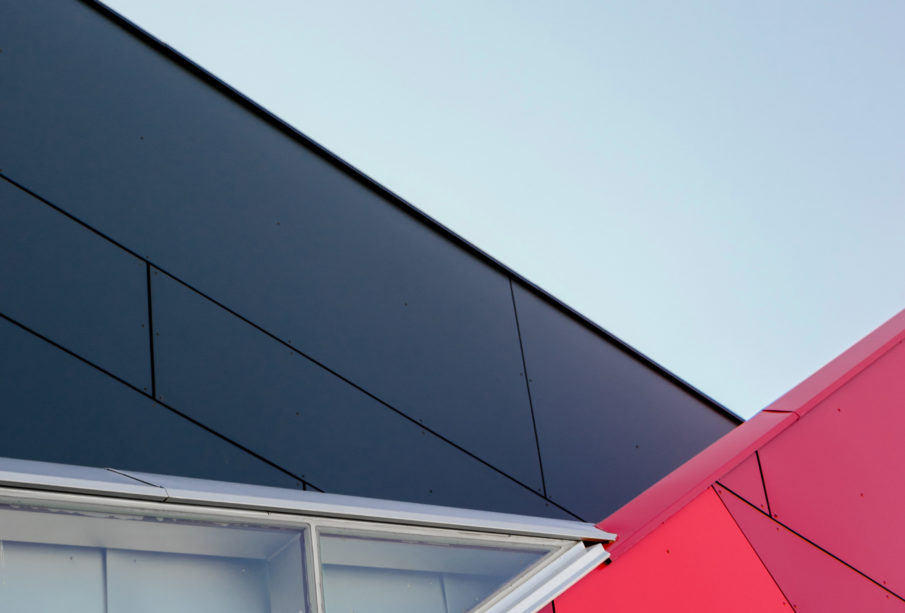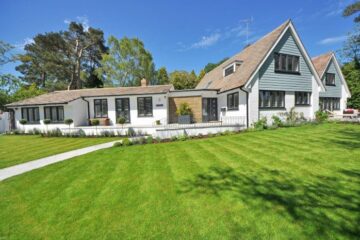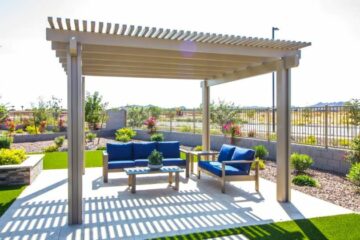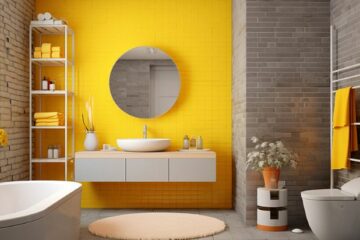
Can you hear it? The hum of happy conversations and glasses clinking? The sound of trendy lounge music wafting through the air as the waves lap softly on the nearby shoreline. No? Ok, neither can I, but I am imagining what it would be like to be far away, perched on a bars tool, drink in hand, soaking up the atmosphere of a beach sidebar. Ah yes, that would be bliss.
Not all of us a lucky enough to live right next to the beach (yours truly included!), but most of us can recreate a laid back outdoor area, complete with chic outdoor settings. A well-designed outdoor area can play many roles, from hosting the family lunch to helping you and your friends sip the night away under the stars.
Even a small inner-city patio can be transformed into an enviable outdoor area, with the right furniture and mindset. So, how do you transform your outdoor area from leave-gathering mess to space you want to spend time in? Just stick to the four key elements, light, purpose, furniture, and shelter.
Let there be light.
Lighting plays a huge role in the way your outdoor area looks and feels. Lighting can be used to enhance mood, create drama, or highlight certain aspects of your outdoor design. There are three main types of lighting in exterior design:
Task
Used for practical purposes, such as garden path lights. Task lighting is used where there needs to be good visibility and where other types of light aren’t providing enough direct illumination. Deck lighting is another example of task lighting; the lights are placed strategically to help people navigate the deck safely in the dark.
Task lighting should not just be practical but beautiful and cohesive when paired with your décor, furniture, and other lighting sources.
Accent
Accent lighting is my favorite type of lighting, funnily enough, it’s used to accentuate! By adding an accent light, you are creating a focal point in your design, whatever is being accented will really pop. I like using a spotlight to accentuate my favorite tree, but it can be used for showing off a piece of art, or even just the texture of a wall. Accent lighting can create depth in your space, but it should be used sparingly.
Accent lighting doesn’t have to be as full-blown as a spotlight or down lights; it can be more subtle, like a lantern that accentuates a doorway, or candles that draw your eye to a shelf, use accent lighting like highlights in your masterpiece.
General/ambient
As you can probably gather, this is your normal, everyday lighting. There should be enough ambient light for you to move about and enjoy yourself comfortably and safely.
These are the basics of lighting your outdoor space. Some light can play dual roles, such as ambient lighting, also providing task lighting. I like or visit beach houses and cafes for inspiration,the art form of lighting is engrossing as it complexes so take your time and design a lighting scheme that fits your needs. Speaking of needs, this brings us perfectly into the next key element of a perfect outdoor space:
Purpose
What will your outdoor area be used for? My outdoor area was designed to emulate a beachside bar. I wanted a sunny space that my friends and I could relax with a few drinks. I achieved the look and feel by using light fabrics, sun loungers and a minimal retreat 7-piece outdoor waterfall bar setting from Domayne. The right blend of décor and furnishings works for me, and I almost forget sometimes I am not at a beach bar!
The beach vibe is not everyone’s cup of guava juice, and your purpose may be very different from mine. To design a great outdoor area, you need to have a reason for doing so. Your purpose dictates everything from style of furniture, to lighting used. Look inside yourself, find what outdoor dreams you are yearning for, and then make them a reality.
Furniture.
When designing an outdoor space, let your choice of furniture do most of the heavy lifting. The right piece of furniture in the right spot can elevate your space from ‘great’ to ‘perfect.’ Finding furniture is a ritual in itself, so again, take your time.
Aesthetics is one thing, but when furniture sits outside for most of its life, there are some extra precautions we must take. Look for furniture that is rated for outdoor use; the Australian sun can destroy things at an alarming rate.
Quality furniture like my Retreat 7 piece is rust-resistant, waterproof and often coated in a protective layer of UV resistant material to keep it looking its best. The Australian sun has an unusually high UV content, and as such, colors can fade quite quickly, especially if they sit out in the full sun uncovered.
Shelter.
I love being outdoors, but I hate having third-degree burns and heatstroke! Shelter is not only the most important aspect of exterior design but for survival itself. For the long-term comfort of you and your guests, make sure your outdoor area is adequately sheltered from the sun, wind, and rain.
For small outdoor areas, an umbrella can be an adaptable solution to the brutal sun. My recommendation would be a teak framed umbrella with Sunbrella fabric. This fabric can survive direct sunlight for a decade before it will start to fade, its waterproof, mold proof and is available in a variety of colors.
Shade providing plants are a natural way of adding protection from the elements; they can also provide privacy. My outdoor area has lengths of white shade cloth draped along areas that get caught in the midday sun. The white fabric not only softens the sunlight and provides shade, but it affords ambiance and sounds almost like the seaside when a breeze undulates through.
Whether you are trying to bring some beach vibes into your outdoor space or creating something different entirely, the core principles of exterior design remain. Follow these core concepts, and above all have fun with it! You are creating a space for your self, so do what makes you feel good. As for me, you can find me relaxing in my private beachside bar. Ok, you got me, catch me in my back yard.
Leave a reply
You must be logged in to post a comment.










